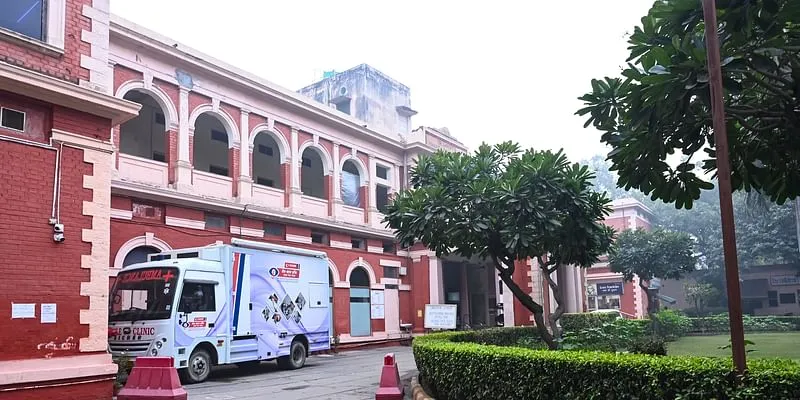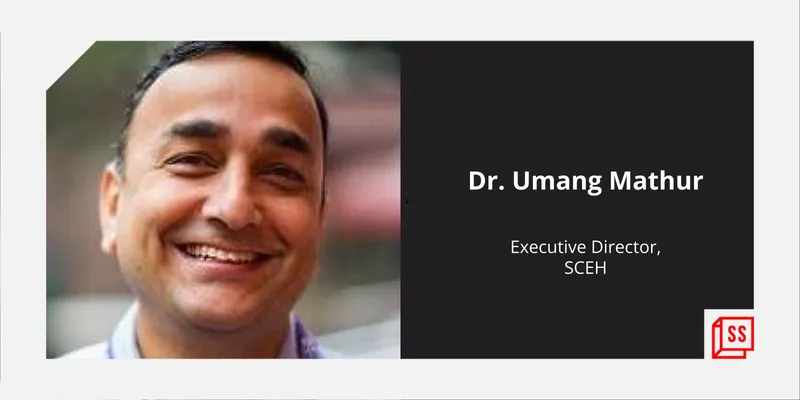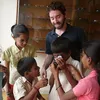How this Delhi-based hospital serves the marginalised by offering free eye care services
Established in 1922, SCEH is one of the oldest and largest eye care institutes in India and globally. Besides providing comprehensive eye care, the institute provides education and training for the healthcare fraternity.
According to the World Health Organisation (WHO), India’s doctor to patient ratio is 1:1456 as against the recommended 1:1000.
However, when you look at a particular medical field, for instance, eye care, the disparity widens further. In urban places, the ophthalmologist to patient ratio is 1:25,000, but in rural India, it is about 1:250,000 — one of the major reasons for this is the lack of eye care access in rural areas.
Delhi-based Dr Shroff Charity Eye Hospital (SCEH) aims to bridge this gap by bringing eye care closer to people.

Dr Shroff Charity Eye Hospital, Delhi
Established in 1922, SCEH is one of the oldest and largest eye care institutes in India and globally. Besides providing comprehensive eye care, the institute is known for its community-led work, essential research and publications, and necessary education and training for the healthcare fraternity.
Through its experienced and trained physicians, Dr Shroff's Charity Eye Hospital offers advanced and comprehensive eye care services to patients residing in Delhi, Uttar Pradesh, Uttarakhand, and Rajasthan.
Cross-subsidy model
The not-for-profit organisation works on a cross-subsidy model — about 50 percent of SCEH’s surgical work are highly subsidised for the patients.
Dr Umang Mathur, Executive Director, SCEH, tells SocialStory, “Initially, we were a complete charity hospital. But, between the 60s and 90s, we faced a lack of funds and resources. By the end of 90s, we revised to the cross subsidy model.”
In fact, the model allows patients to pay for the procedure if they can afford it. According to Dr Umang, the hospital sees an equal number of people in both categories.
While the quality of service remains the same for both sets of patients, private patients get an appointment system to choose their doctors. On the other hand, patients opting for the subsidy model are treated on a first come first serve basis.
SCEH uses patients’ fees to pay salaries and maintain and run the hospital. Moreover, it gets external funding for its capital expenditure and other projects.

How it operates
For SCEH, Delhi remains the main area of operation as its key hospital is present in the national capital.
“During the 2000s, we realised the main need is outside the city. So, we opened six surgical centres outside Delhi and has doctors, paramedics and complete surgical units,” says Dr Umang.
SCEH also operates a chain of 53 primary care centres or vision centres in rural areas run by young technicians.
It provides a free paramedic eye care training course to women and girls from low-income backgrounds residing near the surgical centers. These women, who have passed Class 12, are offered a two-year course, including on-the-job training. They are also given stipends in order to encourage other women and girls to train under the hospital.

From inside the hospital
SCEH also trains in various streams, including courses in assistance in surgery, nursing assistants, vision technicians, front office and registration, etc. Once the course is complete, they are placed in the vision centres, performing various functions.
In the past six years, the non-profit has claimed to have trained 600 women and girls.
“We have a referral system, where once these primary care providers identify a cataract or sub-specialty cases, they would refer it to us, and we would pick them up and bring it to the surgical centre,” explains Dr Umang.
Every day, each vision centre sees around 20 patients. Additionally, SCEH conducts a door-to-door check-up campaign for about 30 lakh people from 3,000 villages.
Vision ahead
Annually, SCEH sees close to 5 lakh patients and performs over 40,000 sight restoring surgeries.
Going forward, SCEH, with a team of 1000 people, aims to cover more geographical areas, open more surgical centres, and strengthen its eye care academy.
Edited by Suman Singh








